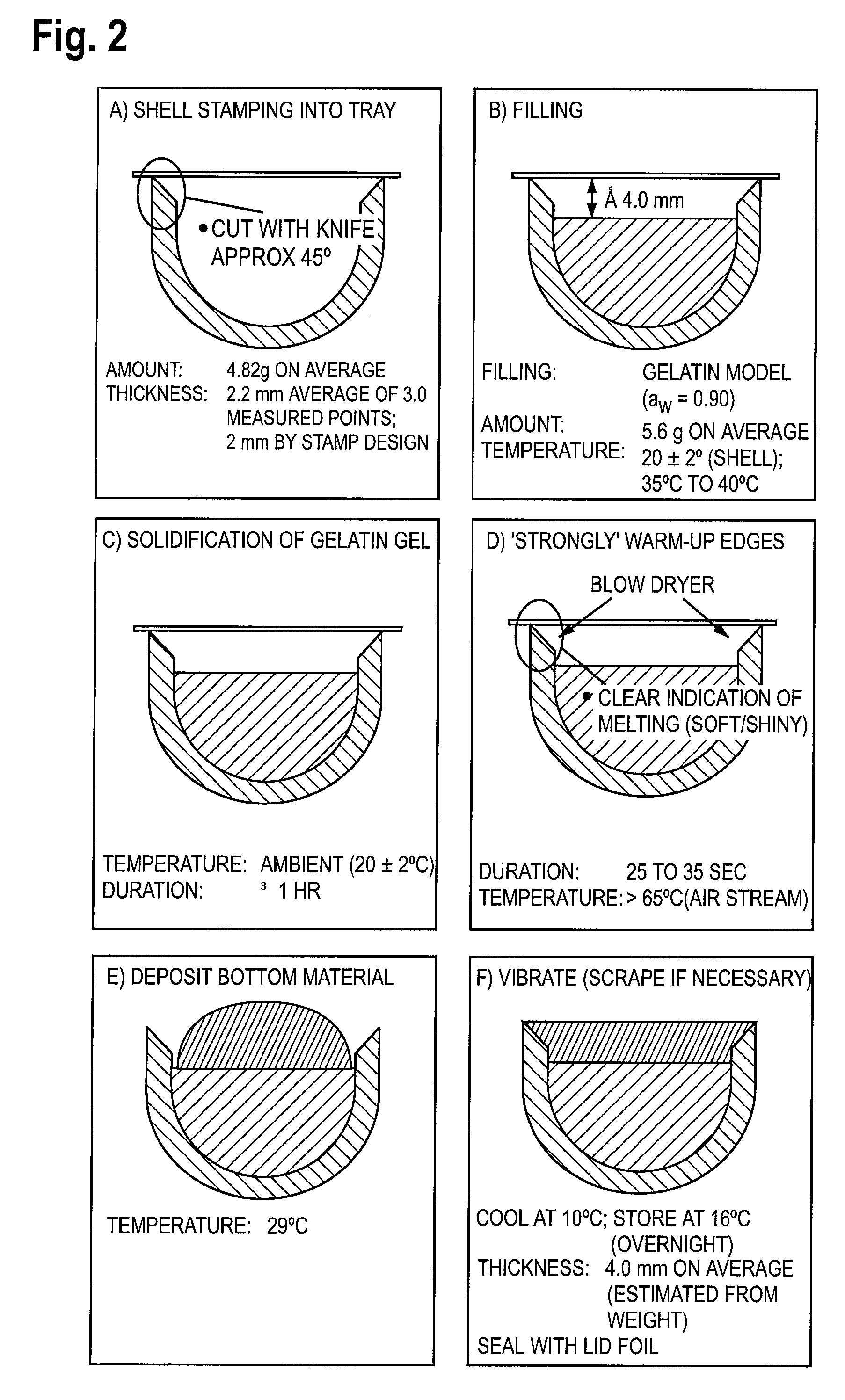Filled confectionery products
- Summary
- Abstract
- Description
- Claims
- Application Information
AI Technical Summary
Benefits of technology
Problems solved by technology
Method used
Image
Examples
Embodiment Construction
[0053] Following below, a specific embodiment exemplifying the process and a confectionery product according to the invention is presented.
Determination of Water Activity (aw)
[0054] The water activity (aw value) is determined at 25° C. using the instrument AquaLab Model XC-2 and following the manufacturer's instructions for the instrument. The linear offset of the instrument is verified against known salt standards, one of which displaying an aw above that of the sample and the other one displaying an aw below that of the sample. The aw of distilled water has to be 1.000±0.003. The measurement of the aw value of the sample is repeated until two successive values differ by less than 0.003. The aw value assigned to the sample is the average of those two values.
[0055] As shown in FIG. 1 the packaging consists of a thermoformed tray with 8 hemi-spherical or dome-shaped cavities and a transparent lid foil.
[0056] The shell and bottom of the confectionery product contained the followi...
PUM
 Login to View More
Login to View More Abstract
Description
Claims
Application Information
 Login to View More
Login to View More - R&D
- Intellectual Property
- Life Sciences
- Materials
- Tech Scout
- Unparalleled Data Quality
- Higher Quality Content
- 60% Fewer Hallucinations
Browse by: Latest US Patents, China's latest patents, Technical Efficacy Thesaurus, Application Domain, Technology Topic, Popular Technical Reports.
© 2025 PatSnap. All rights reserved.Legal|Privacy policy|Modern Slavery Act Transparency Statement|Sitemap|About US| Contact US: help@patsnap.com



